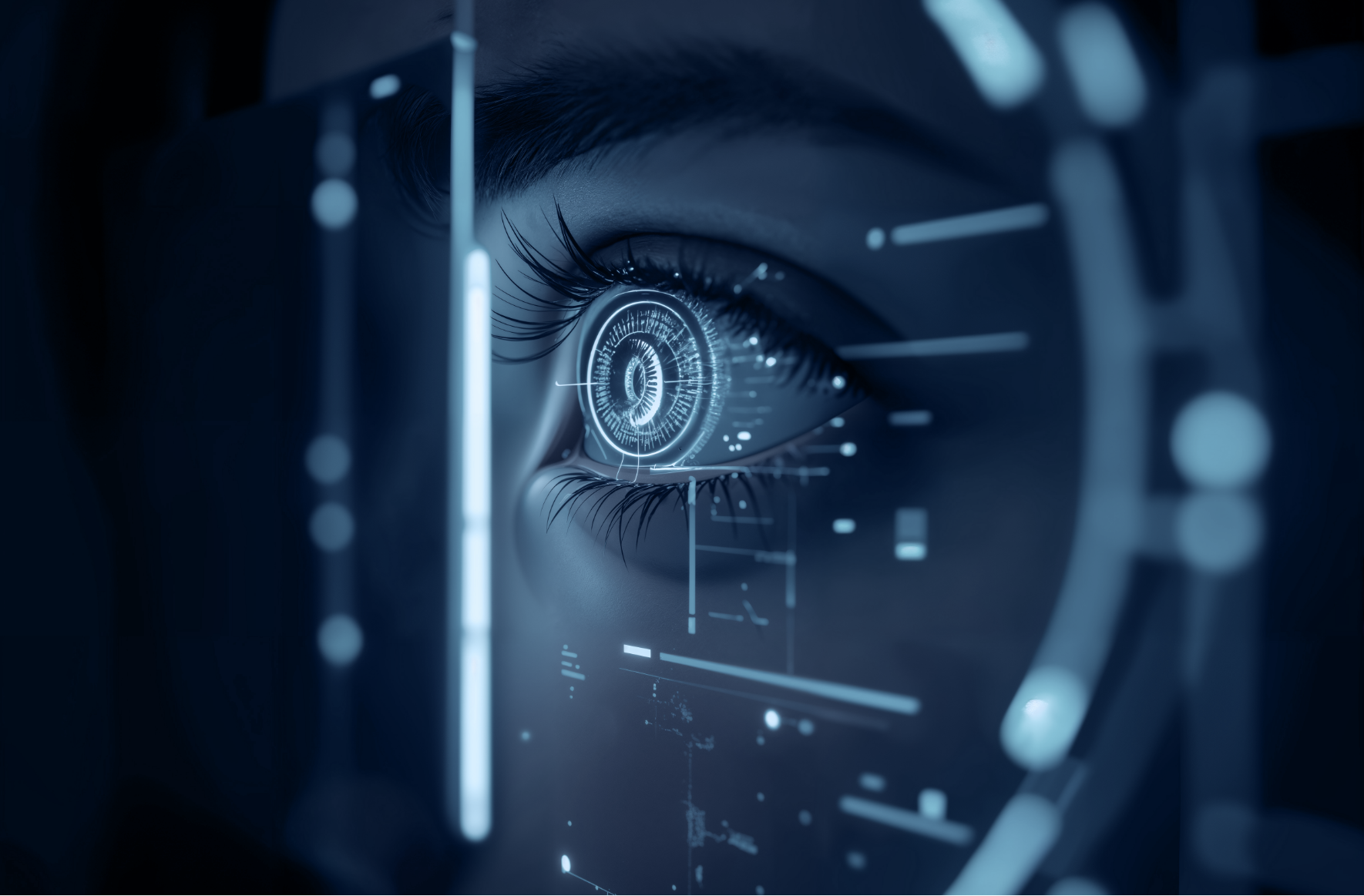
Why Eye-Tracking
Matters More Than Ever
In a world where precision and speed define user experience, AI–powered Eye-Tracking has evolved from a niche capability to a critical technology.
By detecting and capturing human behavior through gaze patterns, it opens new possibilities in products like IoT devices, wearables, assistive technology,—bringing measurable, positive impact to safety, accessibility, and user engagement.
What is Eye-Tracking?
Eye-Tracking is the process of detecting and following where a person is looking, and how their eyes move. By measuring gaze direction, pupil position, and motion patterns, Eye-Tracking systems can understand a user’s attention, intent, and state.
How AI/ML Revolutionizes
Eye-Tracking?
Traditional Eye-Tracking systems often use rule-based algorithms or DSP processing, which can fall short in accuracy, adaptability, and power efficiency—especially in dynamic, real-world conditions. Advances in AI and machine learning change the game. Modern models learn complex eye movement patterns and adapt seamlessly to different users, lighting, and scenarios, making them more precise and robust.
![]() AI-powered Eye-Tracking goes beyond simply pinpointing where someone is looking—it interprets why they’re looking there. By analyzing raw eye movement data, it can infer attention, intent, and cognitive state, offering insights into what captures interest, causes confusion, or influences decisions.
AI-powered Eye-Tracking goes beyond simply pinpointing where someone is looking—it interprets why they’re looking there. By analyzing raw eye movement data, it can infer attention, intent, and cognitive state, offering insights into what captures interest, causes confusion, or influences decisions.
Introducing BrainChip’s
AkidaTM Eye-Tracking Model
Built on event-based, lightweight spatiotemporal Neural Network, the Akida Eye-Tracking model detect changes in brightness at each pixel as they happen—instead of capturing fixed-rate frames. This data-efficient approach tracks even the fastest eye movements in real time, with high accuracy, on the tiniest, most power-limited devices—bringing intelligent, responsive vision anywhere.
How It Works:
From Gaze to Insight in Milliseconds
1. Capture
- Detect per-pixel brightness changes in real time using event-based cameras.
- Stream only the changes instead of sending full frames, minimizing data load.
2. Process
- Process locally with Akida IP using a lightweight, event-based spatiotemporal model.
- Interpret eye movement patterns to determine gaze direction, attention, intent, and cognitive state.

3. Act
- Trigger an alert, enable an interactive response, or send data for further analysis.
- Operate entirely on-device for immediate action and privacy protection.
The Akida Eye-Tracking model is a lightweight, high-performance solution for real-time, low-power applications on edge devices. Designed specifically for event cameras, this spatiotemporal network efficiently processes temporal and spatial event data to accurately predict pupil position.
The Akida Advantage
Ultra-Low Power
Drastically extend battery life and enable “always-on” functionality in devices like smart glasses, wearables, and consumer electronics.
State-Of-The-Art Accuracy
The eye-tracking model has achieved top-tier performance in industry challenges, delivering high-precision pupil and gaze detection.
Real-Time Performance
Process eye-tracking data in milliseconds directly on the device, eliminating the latency of cloud-based solutions and enabling instant user feedback.
Enhanced Privacy
All data processing happens locally at the edge, ensuring sensitive user information never leaves the device.
Enabling Eye-Tracking Across Industries
1. AR/VR & Gaming
Real-time gaze tracking powers immersive interactions in AR/VR headsets and gaming systems. It enables foveated rendering for efficiency, dynamic content that responds to the user’s gaze, and intuitive hands-free controls for deeper engagement.
2. Transportation Monitoring Systems
Low-latency gaze tracking enhances driver and operator monitoring, detecting drowsiness, distraction, or inattention before accidents occur. In aviation, rail, and other sectors, it helps ensure focus, boosting safety and mission performance.
3. Assistive & Healthcare Technologies
Hands-free control of devices and mobility aids empowers people with disabilities to communicate and live independently. In healthcare and research, eye movement data can assist in diagnosing and tracking neurological or developmental conditions.
4. Industrial Applications
In manufacturing, logistics, and field work, eye tracking enables hands-free control of machinery and wearables. It can also track attention to improve ergonomics, reduce fatigue, and boost productivity in complex workflows.
See Eye-Tracking
in Action With
Akida Cloud
Test, benchmark, and validate Eye-Tracking model in Akida Cloud without hardware required. Akida Cloud provides direct access to BrainChip’s Akida 2 platform, letting you test the capabilities and efficiency of the Akida IP without any local hardware or software setup.
Integrating Eye-Tracking
Into Your Next Chip Design
Eye-tracking enables a new era of hands-free interaction, enhancing safety, user experience, and efficiency across a range of devices.
The Akida Eye-Tracking Model, powered by our advanced event-based neuromorphic technology at the edge, revolutionizes product design with an ultra-low-power, private, and easy-to-integrate solution for natural, intuitive control.
Want to Learn More About BrainChip’s Eye-Tracking Technology?
Download the Akida Eye-Tracking brochure by filling out the form below:






